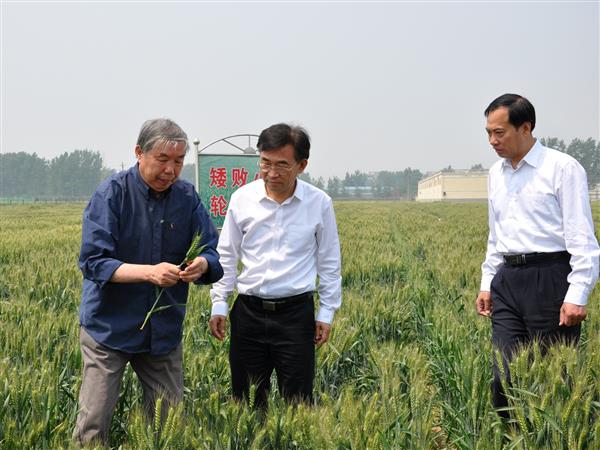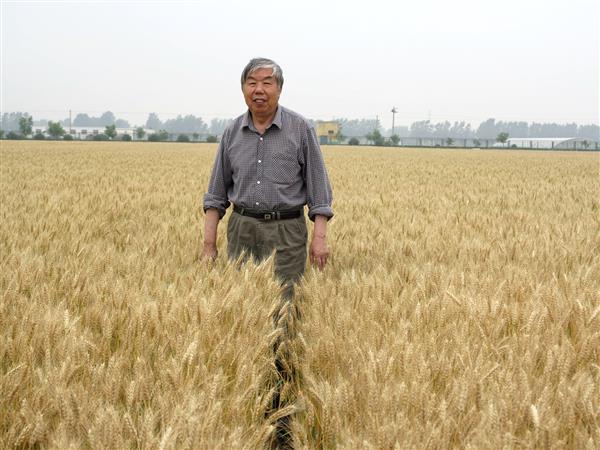Lunxuan-987 Successively Created Wheat Yield Record
Date:2014-08-18Author:AdminSource:ICS
Recently, specialists organized by Beijing Municipal Bureau of Agriculture have conducted the paid-in yield on 9.3 hectares (ha) of Lunxuan-987 wheat planted by Doudian village of Fangshan district, Beijing. The result showed that the average yield reached 10.23 tone/hectare (t/ha), which created the highest record of wheat yield in Beijing and also refurbished the yield record of 9.08 t/ha created by “Lunxuan-987” in 2011.
Lunxuan-987 is a dwarf, multi-resistant and super-high-yield wheat variety, which was bred by the Institute of Crop Sciences, Chinese Academy of Agricultural Sciences, through using the dwarf male-sterile wheat technology via the self-dependent innovation. Lunxuan-987 was participated in the National regional test and the average yield was increased by 14.8% compared with the control variety. The highest yield was 10.73 t/ha from the pilot area and the measured yield was 10.11 t/ha from the farm field in Xushui county of Hebei province, which created the highest yield record in the National pilot and the Northern winter wheat areas, respectively.

In the high-yield competition organized by Beijing municipality, Doudian village that planted Lunxuan-987 successively won the championship for many years. Lunxuan-987 possesses not only the great yield potential and good adaptation, but also multi-resistances to cold, drought, dry and hot wind, spike germination, powdery mildew, and Sitodiplosis mosellana. It made large area promotion in the wheat production for more than 10 years.
Lunxuan-987 was bred by the dwarf male-sterile wheat (DS wheat) technology. DS wheat is not a variety, but an efficient system for breeding new varieties.” Professor Binghua Liu said, “Favorable genes from tens or even hundreds of wheat germplasm accessions can be introduced into populations using DS wheat for recurrent selection. Outcrossing seeds harvested from the selected male-sterile plants can be used as the next recurrent parental population. Each segregated fertile plant represents a novel genetic makeup due to chromosomal recombination. This dynamic gene pool is a new and valuable asset for breeders and can be used as the basis for developing new varieties. In a sense, this new gene pool serves as a “factory” from which new varieties with high-yield, stable-yield and multi-resistances can be continually selected to meet the needs of farmers and society, as displayed by Lunxuan-987”.

